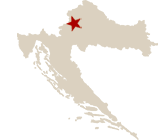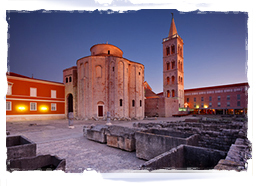An Introduction to Croatia
The Republic of Croatia includes a long strip of Adriatic coast as far south as the major resort of Dubrovnik, and a northern inland wing, which between them appear to be chomping the western half of Bosnia. Croats arrived in the territory that bears their name in or around the seventh century AD, and a Kingdom of Croatia emerged and was powerful in the tenth and eleventh centuries. Union with Hungary and later the Habsburg monarchy followed and protected it from the Ottoman threat right up until the early twentieth century. With its neighbours, it was then part of the short-lived Kingdom of Yugoslavia and then Tito's socialist Republic. See full country profile.Latest Research News from Europe (Other)
18 current Other European jobs including:
Customer Support Executive - Become the Client Success Hero at Ipsos.Digital, Bucharest Office or Remote (Romania), EUR Competitive salary & benefits - (posted Jul 22 2025)
PHP Developer - Engineer Revolutionary Features for Ipsos.Digital's Research Platform, Bucharest Office or Remote (Romania), Competitive salary & benefits - (posted Jul 16 2025)
Senior C#/.NET Software Engineer (Backend), Remote (Romania), Competitive salary and benefits - (posted Jul 15 2025)

GOVERNMENT: Unitary parliamentary constitutional republic
AREA: 56,594 sq km
POPULATION: 4,290,612 (July 2011 est.)
MAJOR LANGUAGE: Official Language: Croatian

Some business and general info
The Market Research Industry
Trade and Industry in Croatia
Sport has a huge following in Croatia with participation at levels unheard of in many other countries - for example the Croatian Football Federation has more than 118 thousand registered players and consequently the country tends to punch above its weight in Olympic competition. Its internationally famous sports stars include Davor Suker, Luka Modric and Goran Ivanisevic.
Go to next country
The Republic of Croatia includes a long strip of Adriatic coast as far south as the major resort of Dubrovnik, and a northern inland wing, which between them appear to be chomping the western half of Bosnia. Croats arrived in the territory that bears their name in or around the seventh century AD, and a Kingdom of Croatia emerged and was powerful in the tenth and eleventh centuries. Union with Hungary and later the Habsburg monarchy followed and protected it from the Ottoman threat right up until the early twentieth century. With its neighbours, it was then part of the short-lived Kingdom of Yugoslavia and then Tito's socialist Republic.
Croatia declared independence in early 1991 and fought Serbian forces until the following year, and internal Serb armies intermittently for the next three years before winning lasting peace. Since then it has fared better than most other parts of the former Yugoslavia: stability has been helped by its ethnic homogeneity (90% Croat); it has a moderately warm and rainy continental climate and includes Alpine and Mediterranean zones, and enjoys a very strong tourist industry; has relatively high income per head and is scheduled to begin EU membership in a year's time. However corruption, high debt and inefficient administration with heavy public sector involvement in the economy are some of the challenges still facing it.
GDP: $80.3 (2011 est.); $18,191 per capita
Religions Roman Catholic 88%, atheist or agnostic 5.2%, orthodox 4.4%, Islam 1.3%, others 1.2% (2001 census)
Currency: Kuna (HRK); 1 HRK = $US 0.16
Telephone Code: + 385
Research Industry
Croatia is the 56th largest research market in the world, and the 27th largest in Europe. 72 percent of MR turnover comes from domestic clients and 28 percent from international. According to the ESOMAR Global Prices Study 2012 the country was the 62nd most expensive for carrying out research.Croatia is a service-based economy the sector accounts for 70% of GDP. The industrial sector is dominated by shipbuilding, which accounts for over 10% of exported goods. The economy suffered badly during the 1991-95 war, with output collapsing, but from 2000 onwards it boomed, with annual GDP growth between 4% and 6%, stable currency and low inflation - tourism and consumer spending leading the way. Since 2008 the financial crisis and slump have affected the country significantly with a high unemployment rate and a growing trade deficit. The new government has announced further reforms including the sell-off of more state-owned businesses, but the World Bank expects the country to enter a recession in 2012 and has urged the new government to cut spending, particularly on social programs.
A 2011 total of $12.3bn in exports consisted largely of transport equipment, machinery, textiles, chemicals, foodstuffs and fuels. Key partners in 2009 were Italy, taking 18.9%, Bosnia and Herzegovina 11.9%, Germany 10.6% and Slovenia 8%. Imports were $20.4 bn in 2011 with machinery and equipment, chemicals, fuels and foodstuffs high on the shopping list and Italy (15.2% in 2009), Germany (12.5%), Russia (9%) and China (7.2%) key suppliers.
Email me:
laurence@mrweb.com

